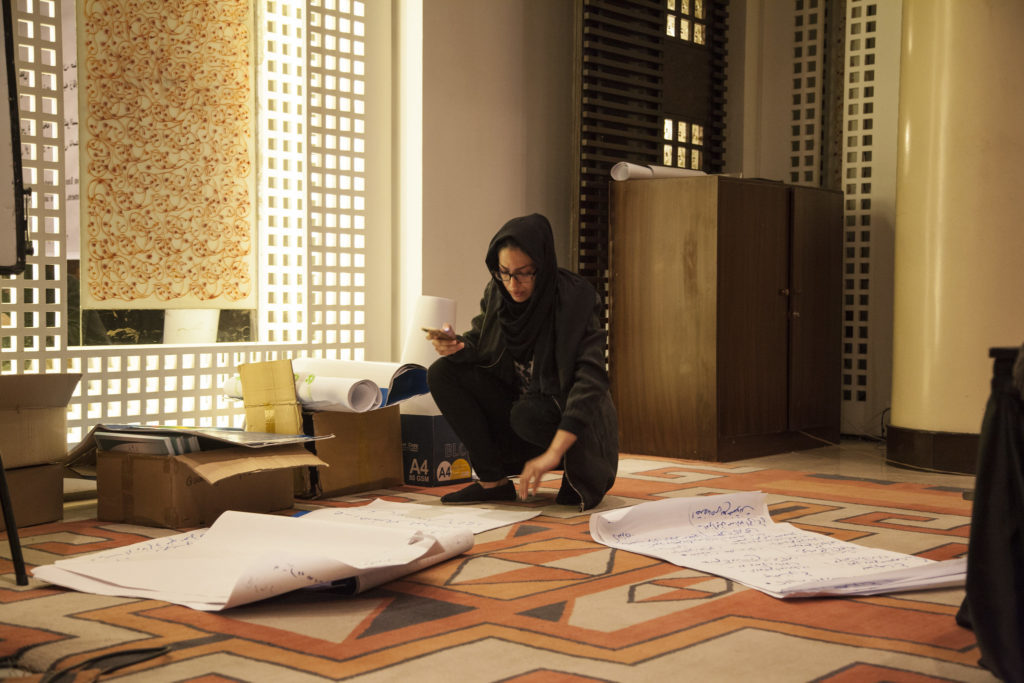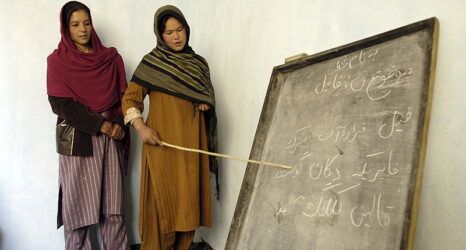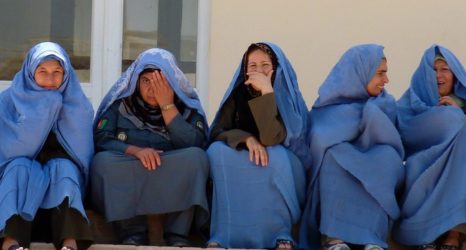This post is the second in a four-part series. Come back next week to read more!
Born in Afghanistan and educated in Beirut and the U.S., Zalmay Khalilzad has served over the years as U.S. ambassador to Iraq, Afghanistan and the United Nations. During the Afghan-Soviet war, he was instrumental in a CIA operation that armed the mujahideen to fight a proxy war for the U.S. against the Soviet Union.
In the late nineties, a consulting company enlisted Khalilzad to do a cost-benefit analysis of building oil and gas pipelines across Afghanistan for Unocal, an American oil company that was attempting to make a deal with the Taliban. Such a deal could have meant millions in royalties paid to the militia group. While Unocal was in the midst of negotiations, Khalilzad sometimes spoke critically of the Taliban, but other times painted them as less anti-American in their fundamentalism than some other groups, writing in a Washington Post op-ed that the Taliban was more like Saudi Arabia than Iran.
The notion that the current Taliban have any earnest interest in peace talks frustrates Afghan Ambassador to the U.S. Roya Rahmani, considering the militia refused a ceasefire and invitations to engage in discussions with the Afghan government or with women’s rights activists. “But they choose to keep on inducing violence,” she says, “in hopes that they can drain everyone of energy and forcefully rule in Afghanistan through fear and oppression.”

Calling themselves the Islamic Emirate of Afghanistan, the state name used during their years of rule, and operating out of an official office in Doha, Qatar, the Taliban envision themselves as a government in exile. They boast their own media channels, reminiscent of the radio stations and newspapers that dispensed Taliban propaganda during the late ’90s.
Wazhma Frogh, founder of the Women & Peace Studies Organization and member of Afghanistan’s High Peace Council, reports that the Taliban have provincial military councils and ground combatants. But their influence is limited to remote areas where geography and a lack of infrastructure have led to virtual isolation from the central government.
In January 2018, a BBC article declared that the Taliban had full control of 4 percent of Afghanistan’s territory and an active presence in another 66 percent of the country. Although the Afghan government rejected these bleak estimates, international media continued reporting them as fact. Researchers at Feminist Majority Foundation (FMF), dubious of the BBC map and other similar public accounts based on territorial analysis, decided to do a study using population data.
“Territory is not the issue,” says Eleanor Smeal, FMF president. “It’s where the people are that matters.”
The FMF turned to the Afghan Central Statistics Organization for population data and to the Afghan Ministry of Interior Affairs for regional security assessments, and sought out interviews with experts and individuals who had walked through localities. Through arduous district-by-district analysis, FMF researchers put together a very different-looking map than the BBC’s—one showing 76 percent of the population and all 34 provincial capitals firmly controlled by the Afghan government. Of Afghanistan’s 421 districts, just 22, comprising 3 percent of the Afghan population, were found to be under Taliban rule. Another 21 percent of the population lives in contested districts where the militia stages at least three attacks per month.
“The Taliban do exist,” Smeal says, “but right now they are mostly a hit-and-run operation.”

This piece is excerpted from a feature in the Summer 2019 issue of Ms.
To fuel our critical reporting on global women’s rights and snag a copy before it hits newsstands, become a member today!
To read more from the issue, check out the excerpt archive.





